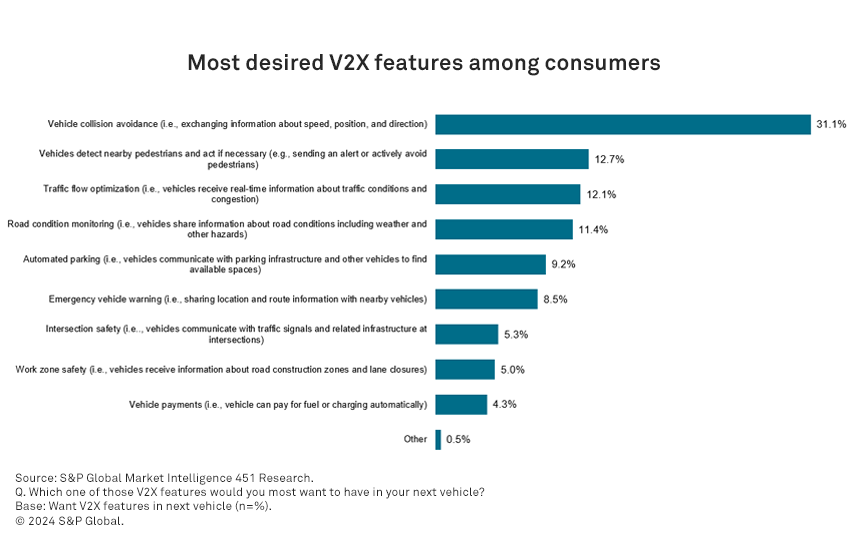
Source: Getty Images.
In the era of software-defined vehicles, one technology stands out for its potential to revolutionize road safety and reduce accidents: Vehicle-to-Everything (V2X) technology. By facilitating data exchange between vehicles, infrastructure, and pedestrians, V2X enables real-time information sharing and proactive decision-making. As vehicles become mobile data centers, collecting, and analyzing data on vehicle performance and off-vehicle information, such as traffic conditions and road hazards, the possibilities for enhancing road safety are immense. In part 1 of this two-part blog series, we’ll look at the benefits of V2X technology implementation, its challenges and market trends.
V2X technology will roll out in three phases, each targeting different aspects of implementation and benefits. However, the adoption of V2X embedded connectivity control units and significant onboard compute is not yet widespread, particularly in non-premium vehicle segments. The full safety potential of V2X highly relies on the number of equipped vehicles, so a high penetration rate is key.
Benefits of V2X technology
Improved situational awareness, proactive decision-making, and cooperative driving are some of the many benefits tied to V2X technology. However, to fully unlock the potential of V2X technology, a robust off-vehicle infrastructure support, including higher bandwidth and lower latency connectivity like 5G cellular networks is required. Standardization and interoperability of V2X communication among suppliers, service providers and governments are also crucial for widely adopted V2X-ecosystem
Challenges in the V2X ecosystem
The slow emergence of ubiquitous Roadside Units (RSUs), which are accessible through DSRC and/or C-V2X-enabled V2X connectivity is a challenge for V2X technology widespread. RSUs play a vital role in enabling V2X communication, but their deployment has been relatively slow. To overcome this challenge and ensure a functioning ecosystem, complementary technologies like multi-access edge compute (MEC) can be deployed nearby in roadside units, integrated with operator cell towers, or in nearby datacenter locations.
V2X Market trends
The adoption of V2X technology varies across different regions. China, for instance, is leading the way in the widespread implementation of Cellular V2X (C-V2X) technology. North America has also embraced C-V2X as a connectivity enabler, while Europe utilizes both Dedicated Short-Range Communications (DSRC) and C-V2X technologies. According to S&P Mobility’s V2X component forecast, the number of light vehicles with V2X connectivity control units is projected to grow significantly in the coming years, with most vehicles utilizing C-V2X technology.
Despite the growing popularity of advanced driving automated systems (ADAS), consumer familiarity with Vehicle-to-Everything (V2X) technology remains relatively low. This lack of awareness can be attributed to V2X’s status as an emerging technology, with some features already commercialized while others are still in the proof-of-concept stage. However, consumer interest in V2X is steadily increasing.
According to a recent survey conducted by 451 Research, a part of S&P Global Market Intelligence, consumers express a strong desire for specific V2X features in their next vehicles. The features in high demand include vehicle collision avoidance (31%), pedestrian detection (13%), and traffic flow optimization (12%). Furthermore, a significant majority of respondents (70%) agree that their vehicle’s data should be utilized to enhance V2X capabilities.

As consumer awareness and understanding of V2X technology continue to improve, there is a promising opportunity for automakers and technology providers to educate and engage consumers about the benefits and potential applications of V2X. By highlighting the tangible advantages, such as enhanced safety and optimized traffic flow, the adoption of V2X technology can be accelerated, leading to safer and more efficient transportation systems for all.
Want insights on IoT trends delivered to your inbox? Join the 451 Alliance.
Notice and Disclaimer: Some of the content in this 451 Alliance blog leverages artificial intelligence in accordance with our Terms of Service.

